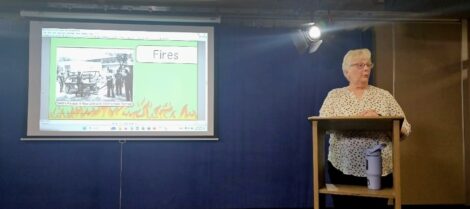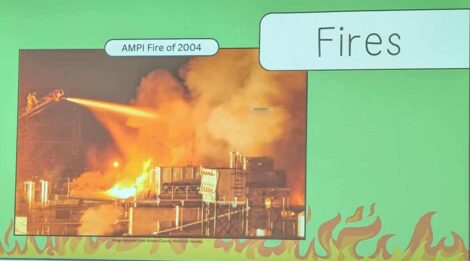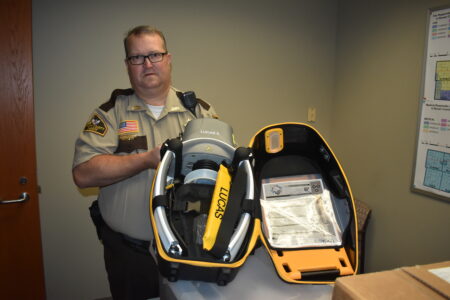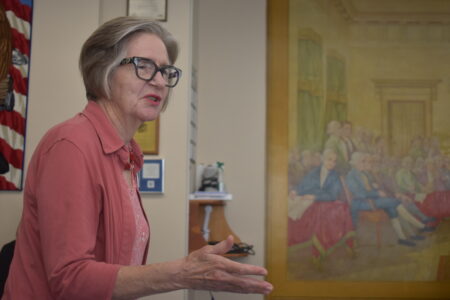Blizzards, floods, fires and tornadoes
Trunk Talk focuses on region’s history of disasters
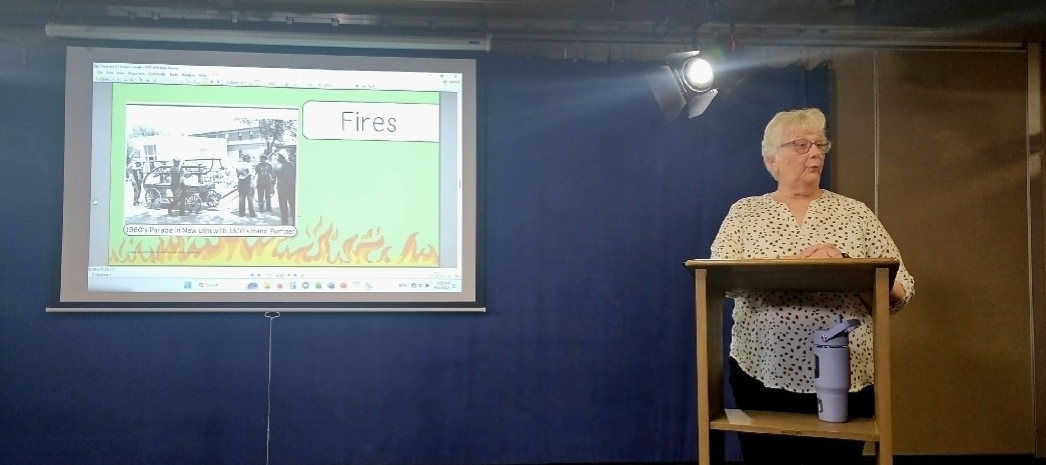
Historian Carla Fjeld discusses major fires Brown County’s past as part of a presentation at the New Ulm Library on Brown County disasters.
NEW ULM — At a recent Trunk Talk held at the New Ulm Public Library, Carla Fjeld of the Brown County Historical Society presented on the natural disasters that have shaped the region’s history, from blizzards and floods to fires, tornadoes and even earthquakes
Fjeld’s presentation opened with the infamous winter of 1965, when 78 inches of snow buried the region–double the seasonal average. Snowdrifts reached the roofline of the Sunset Motel on North Broadway, now the Colonial Inn, and residents dug down to enter buildings. Cars vanished beneath the snow, and daily life ground to a halt.
Brown County’s battle with winter began long before modern meteorology. In January 1873, a whiteout dropped temperatures from 32 degrees to minus 40 in hours. One teacher near New Ulm kept 40 students safe in a one-room schoolhouse for four days, walking through the storm to find food.
The winter of 1880-81, immortalized in Laura Ingalls Wilder’s “The Long Winter,” brought relentless blizzards and bitter cold. Drifts reached 10 feet, railroads shut down, and shortages of fuel and food stretched for weeks. On Minnesota Street in New Ulm, residents dug tunnels through the snow to reach storefronts.
Spring thaws often brought new dangers. In 1881, melting snow and heavy rains caused the Cottonwood River to surge so violently it reversed the flow of the Minnesota River. Three railroad trestles between New Ulm and Redstone were swept away.
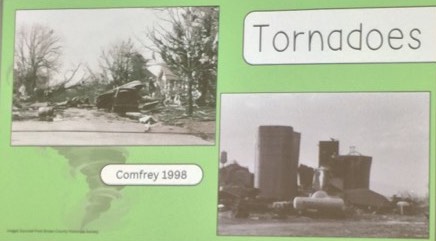
Twin snapshots of destruction—residential and industrial—reveal the sweeping impact of the 1998 Comfrey tornado. The photos were included in Carla Fjeld’s presentations on disasters in Brown County.
A similar pattern followed the brutal winter of 1965, when rapid snowmelt and rain triggered record floods. Ice jams near New Ulm required dramatic intervention, including dynamite delivered by bow and arrow to break up house-sized ice blocks.
Fire posed a constant threat in the 19th century, especially with wooden buildings and limited equipment. New Ulm’s volunteer fire department, founded in 1870, relied on a force pump nicknamed “the man killer.”
In 1936, a fire destroyed four downtown buildings in minus 37-degree weather. Hoses froze solid, and firefighters broke ice from their clothing to climb ladders.
One of the most unusual fires occurred in 2004 at the AMPI butter plant. An estimated 3 million pounds of butter fueled the blaze, which took 11 hours and one million gallons of water to extinguish. The fire contaminated gear and sewers, requiring a custom-built butter trap to protect the Minnesota River.
Tornadoes have also left their mark. In 1881, a cyclone tore through New Ulm, leveling churches and breweries and killing six. In 1998, an F4 tornado devastated Comfrey, destroying three-quarters of the town’s buildings.
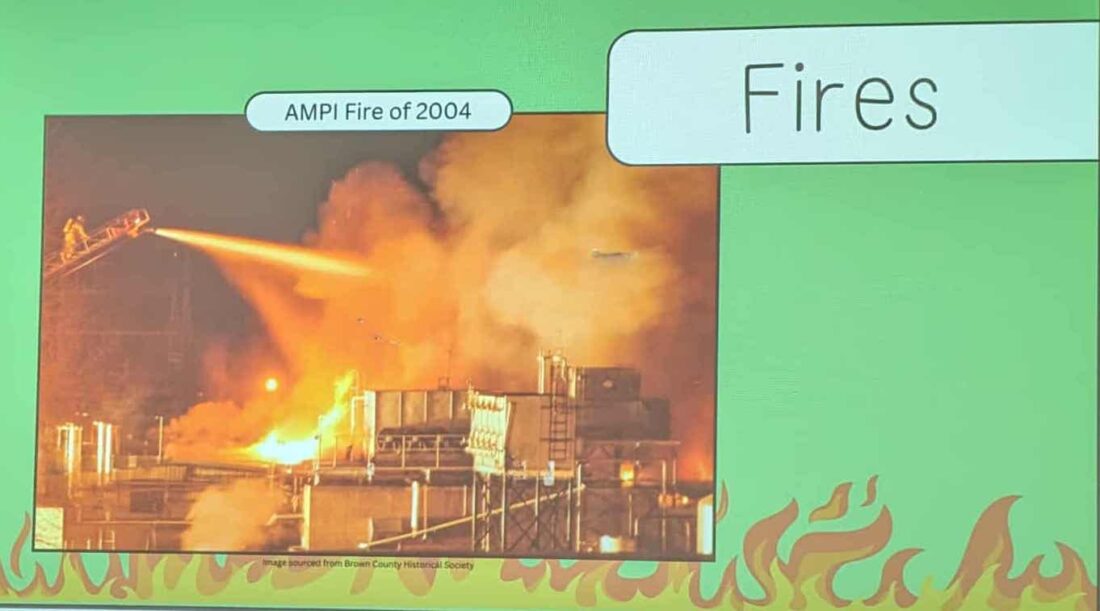
The 2004 AMPI’s packaging plant fire in New Ulm was discussed in Carla Fjeld historical presentation on Brown County disasters.
Fjeld’s presentation emphasized not only the scale of destruction, but the enduring spirit of recovery. Whether neighbors were tunneling through snowbanks, battling butter-fueled flames, or rebuilding after tornadoes, Brown County’s legacy is one of perseverance.
- Historian Carla Fjeld discusses major fires Brown County’s past as part of a presentation at the New Ulm Library on Brown County disasters.
- Twin snapshots of destruction—residential and industrial—reveal the sweeping impact of the 1998 Comfrey tornado. The photos were included in Carla Fjeld’s presentations on disasters in Brown County.
- The 2004 AMPI’s packaging plant fire in New Ulm was discussed in Carla Fjeld historical presentation on Brown County disasters.

